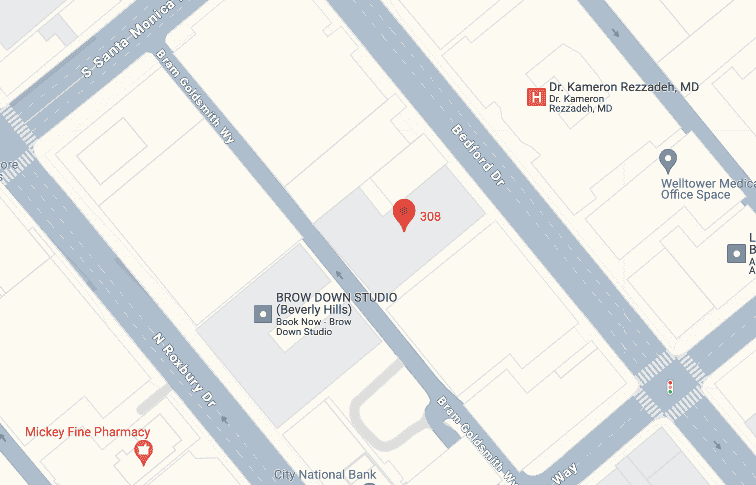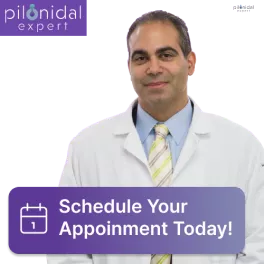What Is Pilonidal Disease?
A pilonidal sinus is a benign affliction that affects as many as 6 in every 100,000 people. Even though it isn’t necessarily life threatening, it still can have adverse effects on your daily life and how you live it. People who are most commonly affected tend to be overweight, people who have to sit for long periods of time, and those who are predisposed to this condition. The afflicted area may be painful and even more so when sitting and is known to swell up with blood, puss and other fluids and debris making it incredibly uncomfortable and unsightly. A pilonidal cyst and a pilonidal sinus can usually be found just above the tailbone and is formed through friction of the area that causes hairs to embed into the skin. This causes a sack to form around the area in which fluid can become caught in causing the area to swell making the likelihood of infection higher. Living with pilonidal disease can be painful, debilitating, embarrassing and unfortunately can be chronic. Thankfully there are multiple different treatment options for you to discuss and go over with your pilonidal expert in order to figure out which treatment plan is the best for you.
1. Rhomboid Flap
A rhomboid flap is an advanced flap procedure used in the treatment of skin defects such as a pilonidal cyst. It involves an incision around the area that is being removed, ideally in the shape of a diamond. Once the skin defect is removed, it allows for the nearby skin to be pivoted, rotating it over the exposed area in order to facilitate the healing process, where stitches will be applied to close up the incisions. This technique minimizes discomfort and pain and makes healing easier and faster while decreasing the probability of dehiscence (the wound reopening). A rhomboid flap is generally a better option than a skin graft from another person or from a different area of your body. This is because there are various complications that arise, ranging from a less than appealing cosmetic outcome, to the graft not being completely accepted by your body. With a rhomboid flap, since the skin is adjacent to the area that has been removed, it will be the same color, thickness, and texture as the surrounding skin, making the area less noticeable once the healing process has completed.
2. Phenol
Phenol Crystal application is a newer technique that was recently recognized by the American Society of Colon Rectal Surgeons as a treatment that should be utilized as standard practice. The phenol chemical act as a cauterizing agent forming an inflammatory reaction with the sinus cavity. This reaction allows for the obliteration of the chronic capsule that lines the cyst and allows for the cavity to thereafter fill in via standard healing. The phenol crystals are meticulously placed within the cavity in the office setting. Most patients report minor pain, yet are able to return to work on the same day. Success rates are reported at approximately 9 our of 10 patients achieving a cure with this office-based treatment. Studies demonstrate that on average 2-4 sessions of phenol crystal treatment will be needed to achieve a cure, though the range is typically between 1 – 7 treatments, all in the office setting.
3. Karydakis Flap
Similar to a rhomboid flap, a Karydakis flap is a flap procedure utilized for closing large skin defects, as would be found when removing a pilonidal cyst. However, instead of making an incision in the shape of a diamond and pivoting the adjacent skin over, the incision is in the shape of a vertical ellipse on one side of the buttocks and is closed by making a flap from the fat and skin next to it, thus covering and closing it. Sometimes the use of a drain may be needed to help keep any fluid from building up during or post-procedure, and modifications may be made as necessary depending on the patient and the pilonidal sinus because each situation is relatively unique. This particular procedure is well suited for patients with smaller cyst cavities that would not leave a large defect at the time of excision.
4. Laser Pilonidal Plasty
Laser pilonidal plasty is a type of laser treatment for a pilonidal cyst and sinuses. These cysts occur just above the tailbone and are pockets in which debris such as hair, skin, and fluids congregate and can become infected. The goal is to remove the cyst, its root if embedded, clear out the area, and use preventative measures in order to keep the cyst from reforming in the future.
Laser pilonidal plasty is a short minimally invasive procedure. Rather than excision of the cavity, the cavity is ablated with the laser. In general the procedure involves anesthetizing the affected area by your medical team. They will then proceed to remove the cyst and its pit if applicable, and clear out any remaining debris such as hair and other articles that congest the site. Once this is completed the area is flushed out and cleansed before the laser is applied. The laser utilizes intense light that is produced by an internal fiber and is controlled through a probe with a glass tip. The doctor will take the probe and insert it into the pilonidal sinus, holding the laser at such an angle so that the pilonidal opening is in line with the laser beam. This helps to keep any healthy tissue from being damaged in the process, closes the wound, destroys the tract lining and is repeated as necessary until complete.
5. Primary Excision (Pilonidal Cyst Excision)
A primary excision of a pilonidal cyst is where the cyst and some of the surrounding tissue is completely removed. This is done via an incision that extracts the cyst, fluid, and any debris from the site. Generally speaking, this procedure has fallen out of favor due to high complication rates, though there are specific settings wherein it may still safely be utilized with minimal risks. Until the wound has completely healed it is advised to refrain from sitting for long periods of time, and to refrain from any strenuous activities. After 4-6 weeks most people are able to live life as normal.
6. Unroofing and Marsupializaition
This procedure involves opening (unroofing) and draining the cyst surgically, and once drained, suturing the edges of the abscess together so that a permanent, open pouch is created. This pouch is usually about 6 millimeters in size and allows fluid to drain more easily and is regarded as “marsupialization” and is performed in order to discourage any recurrences. A small catheter may be inserted and left in the pocket for a few days in order to help the fluids to completely drain, and on either side of the wound the doctor may put stitches to make sure the opening becomes permanent. This procedure is relatively short and only takes about 15 minutes and requires only a general or local anesthetic. Once they have recovered from the anesthetic, the patients are usually discharged the same day with a prescription for any necessary painkillers, as well as any antibiotics needed if the cyst had been infected. The healing process is usually complete in about 1 or 2 weeks. Patients are usually advised to keep the surgical area dry and clean, and may be required to self administer antiseptic to the area to help reduce pain and risk of infection. If pilonidal cysts recur after this procedure, it may be necessary to completely remove the cyst and its surrounding tissue surgically.
7. Gips Procedure
The Gips procedure is one of the faster techniques in terms of recovery time. Local anesthetic is applied to the general area, and then a probe is utilized in order to identify any and all tracts and cavities. From here skin trephines are created along the tract in regular intervals to allow for drainage and healing of the cyst cavity post treatment. As a result small pits/holes remain which will heal over time. Most patients return to work after about 1 week of recovery and only report minimal discomfort and pain during recovery.









